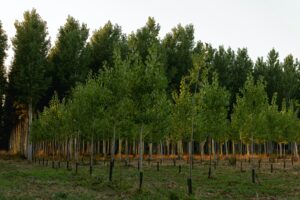The climate crisis has reached a critical point, and urgent action is needed to mitigate its devastating effects. Amidst the many solutions available, reforestation emerges as a powerful and transformative tool. By planting trees on a massive scale, we can rejuvenate ecosystems, sequester carbon dioxide, restore biodiversity, and combat climate change. In this article, we will explore how reforestation can revolutionise the global landscape and serve as a vital solution to the climate crisis.
 Carbon Sequestration and Climate Regulation
Carbon Sequestration and Climate Regulation
Trees are nature’s carbon sinks, absorbing carbon dioxide through photosynthesis and storing it in their trunks, branches, leaves, and roots. Reforestation on a large scale has the potential to capture significant amounts of CO2 from the atmosphere, effectively reducing greenhouse gas emissions. A single tree can sequester several tons of carbon over its lifetime. By restoring forests and expanding tree cover, we can play a crucial role in regulating the Earth’s climate and mitigating the impacts of global warming.
Biodiversity Conservation and Ecosystem Restoration
Reforestation initiatives go beyond carbon sequestration; they also foster biodiversity conservation and ecosystem restoration. Forests are home to an incredible variety of plant and animal species, many of which are threatened or endangered due to habitat loss. Reforestation provides opportunities for these species to recover and thrive. As forests regenerate, they create new habitats, support wildlife corridors, and enhance the resilience of ecosystems. Restoring biodiversity is not only essential for ecological balance but also for maintaining essential ecosystem services that support human well-being.
Water Cycle and Watershed Protection
Forests play a crucial role in the water cycle, influencing rainfall patterns, regulating water flow, and maintaining the health of watersheds. Trees act as natural water filters, preventing soil erosion and purifying water by absorbing pollutants. Reforestation can improve water quality, reduce the risk of flooding and landslides, and increase water availability. Healthy forests contribute to the sustainable management of freshwater resources, benefiting both local communities and downstream regions.
 Socioeconomic Benefits and Sustainable Development
Socioeconomic Benefits and Sustainable Development
Reforestation initiatives bring significant socioeconomic benefits to communities worldwide. By involving local populations in tree planting and forest restoration projects, we can create employment opportunities, generate income, and enhance livelihoods. Reforestation can contribute to sustainable agriculture, provide non-timber forest products, and support ecotourism. Moreover, restored forests offer recreational spaces and cultural connections, fostering community well-being and pride.
Climate Adaptation and Resilience
As climate change intensifies, communities face increased risks from extreme weather events and natural disasters. Reforestation plays a crucial role in climate adaptation and resilience. Trees act as natural shields, protecting against erosion, buffering against storms, and regulating temperature and humidity. By restoring forests and planting trees strategically, we can enhance the resilience of ecosystems and communities, ensuring their ability to cope with the impacts of climate change.
Reforestation holds tremendous potential to transform the global landscape and serve as a vital solution to the climate crisis. By restoring forests, we can sequester carbon dioxide, conserve biodiversity, protect watersheds, and enhance the overall health of ecosystems. Reforestation also brings numerous socioeconomic benefits, contributing to sustainable development and community resilience. As individuals, communities, businesses, and governments, we must prioritise and support reforestation efforts. By working together to restore our planet’s forests, we can combat climate change, preserve biodiversity, and create a more sustainable and resilient future for generations to come.






